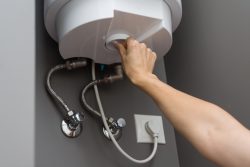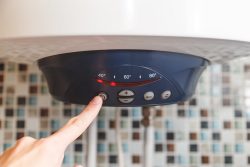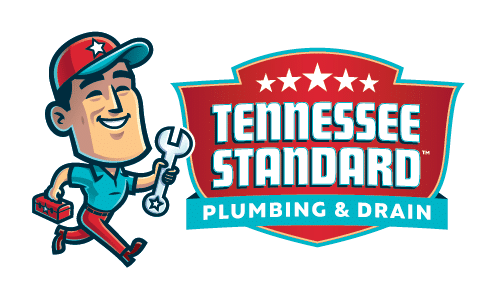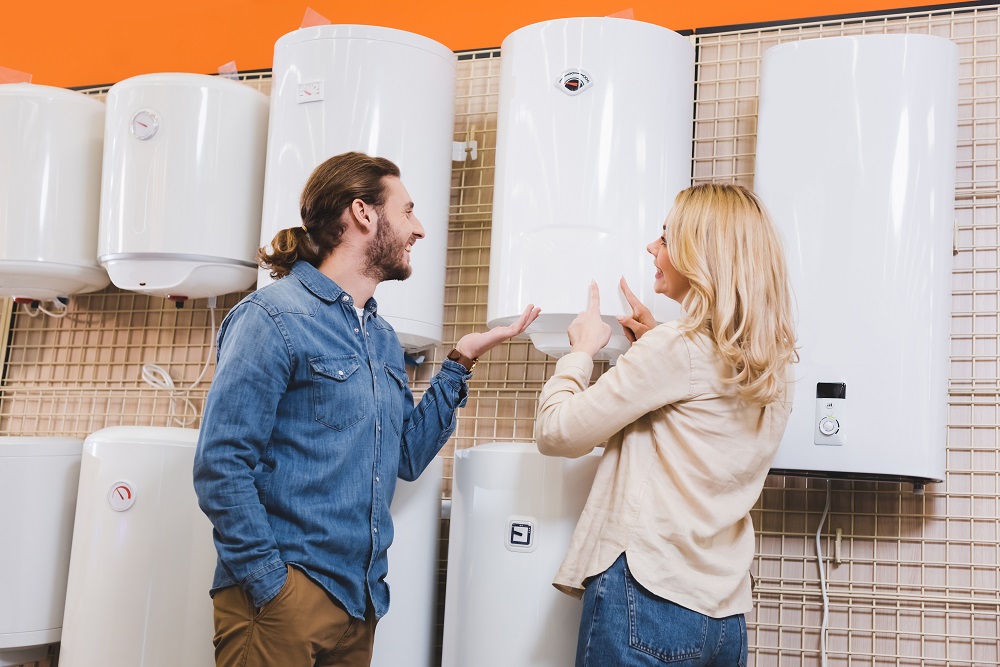Table of Contents
- Key Takeaways
- Know Your Household’s Hot Water Usage
- Understand Flow Rate (GPM)
- Pick Between Gas and Electric Models
- Check Energy Efficiency Ratings
- Account for Installation Costs
- Check for Rebates and Local Incentives
- Review Warranty and Long-Term Support
- Why These Tips Make a Difference
- Ready to Find the Right Fit?
If your current water heater is running out too fast or driving up energy bills, a tankless system might be the upgrade you’ve been looking for. The right unit can provide hot water on demand, reduce waste, and lower monthly costs.
For over 20 years, Tennessee Standard Plumbing has helped homeowners across Oak Ridge and surrounding areas make smart plumbing decisions that fit their lifestyle and budget. If you’re exploring tankless options, these seven tips will walk you through everything you need to know.
Need help deciding? Contact us today for expert guidance and a free quote. We’ll help you compare options and choose the best system for your home’s size, layout, and water usage.
Key Takeaways
- Sizing your unit based on real-time water use is the foundation for reliable hot water.
- Flow rate (GPM) and incoming water temperature directly impact performance.
- Choose gas for high demand, electric for smaller or simpler setups.
- Look for ENERGY STAR® and high UEF ratings to reduce energy bills.
- Installation costs vary depending on electrical or gas requirements.
- Rebates and tax credits can help offset your upfront investment.
- A strong warranty and service support give long-term peace of mind.
1. Know Your Household’s Hot Water Usage
Unlike traditional systems that store water in a tank, tankless water heaters produce hot water on demand. That means your system must meet your home’s peak usage, not just your average.
To estimate that, calculate the total gallons per minute (GPM) your household might use at one time. Here are some averages:
- Shower: 2.0–2.5 GPM
- Bathroom faucet: 0.5–1.0 GPM
- Dishwasher: 1.0–1.5 GPM
- Washing machine: 2.0 GPM
If you run two showers and a dishwasher at the same time, you’d need a system that can deliver at least 6 GPM to keep up.
Tip: Add up the GPM ratings for any hot water activities that may happen at once. That’s your target flow rate.
2. Understand Flow Rate (GPM)

In Oak Ridge, TN, the colder winter groundwater temps can affect heater performance. For example, a unit rated at 6 GPM in a warm region might only produce 4 GPM here in the winter.
Tip: Ask your plumber or use manufacturer flow rate charts that factor in inlet water temperature to estimate performance accurately.
3. Pick Between Gas and Electric Models
Tankless heaters are available in natural gas, propane, and electric models. Each has benefits depending on your home’s infrastructure.
- Gas and propane models offer higher flow rates and are ideal for larger households. However, they require proper ventilation and combustion air, which can increase installation complexity.
- Electric models are compact and simpler to install. They’re often a good fit for smaller homes or point-of-use applications like guest bathrooms or workshops.
Tip: If your home already has a gas supply and venting, gas models may offer better performance. Otherwise, electric units can work well for moderate demand.
4. Check Energy Efficiency Ratings
Tankless water heaters are more efficient than storage tank models because they don’t waste energy keeping water hot all day. However, there’s still variation between models.
The Uniform Energy Factor (UEF) tells you how efficiently a unit converts energy into hot water. The higher the UEF, the better. Gas tankless heaters typically range from 0.80 to 0.99 UEF, while electric models can reach 0.98 or higher.
According to the U.S. Department of Energy, homes that use 41 gallons or less of hot water per day can save 24%–34% on energy with a tankless system compared to a conventional tank.
Tip: Look for ENERGY STAR®-certified models to access rebates and get the most efficiency per dollar spent.
5. Account for Installation Costs
Tankless systems often cost more to install than storage tank heaters, especially in homes that need upgrades. This includes:
- Gas line resizing or venting modifications for gas units
- Electrical panel upgrades for high-capacity electric models
- Water softeners in areas with hard water, to reduce scale buildup and maintain efficiency
Water heater installation in Oak Ridge typically ranges from $1,000 to $3,500, depending on labor, permits, and retrofit needs.
Tip: Get a full installation quote upfront. Make sure it includes permits, venting, water line adjustments, and disposal of old units if needed.
6. Check for Rebates and Local Incentives

- Federal tax credits (as of 2025) may offer up to $600 for ENERGY STAR-certified ankless heaters.
- Some local utilities may add $100–$500 in additional rebates for high-efficiency systems.
Tip: Ask your plumber or check the DSIRE database for current rebate programs in your area.
7. Review Warranty and Long-Term Support
Tankless systems last 15–20 years when maintained properly. But repairs can be expensive without a good warranty.
Look for units that offer:
- 10–15 years on the heat exchanger
- 5–10 years on parts
- 1 year or more on labor (may vary by installer)
Also, choose a brand that has accessible tech support, service manuals, and replacement parts. Some low-cost brands don’t provide easy access to customer service, which becomes a problem if issues arise.
Tip: Ask about manufacturer warranties and local service availability before purchasing.
Why These Tips Make a Difference
Tankless water heaters can save space, lower your monthly bills, and give you hot water when you need it. But the system only performs well if it matches your home’s usage, power supply, and temperature conditions.
Choosing based on flow rate, incoming water temperature, and installation requirements avoids surprises down the road. These tips help you make a decision based on how your Oak Ridge home works, not just what looks good on paper.
Ready to Find the Right Fit?
At Tennessee Standard Plumbing, we help homeowners make confident decisions backed by real experience. We’ll help you choose the right unit, install it safely, and answer your questions long after the job is done.
Call us today to schedule a consultation or request a quote. We’ll help you install the right tankless water heater that delivers comfort, energy savings, and long-term value right here in Oak Ridge, TN.


